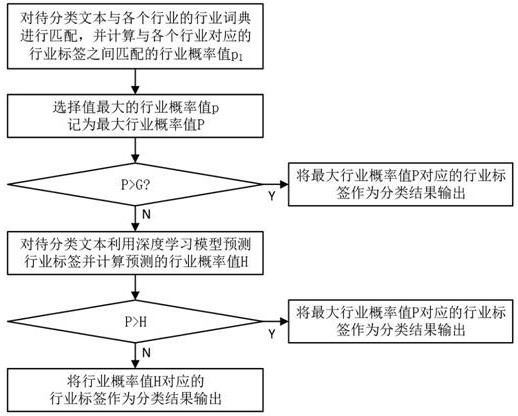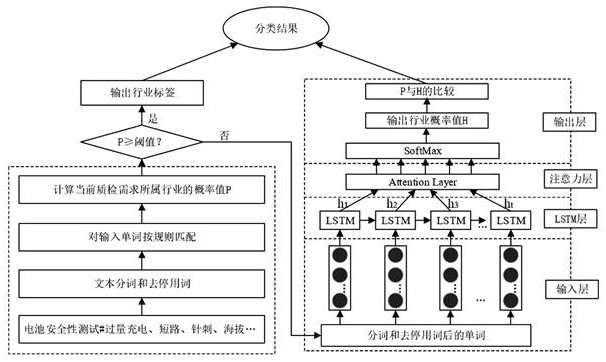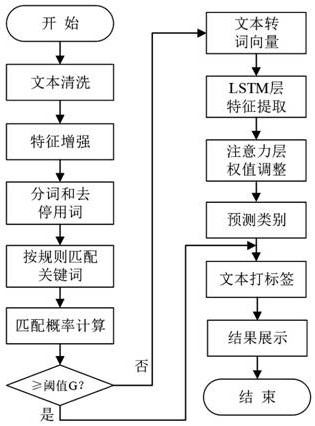User quality inspection requirements classification method and system based on rule matching and deep learning
A technology of deep learning and classification methods, applied in the field of inspection and detection services and machine learning, it can solve the problems of large impact of classification results, poor classification effect of deep learning models, and sparse text features.
- Summary
- Abstract
- Description
- Claims
- Application Information
AI Technical Summary
Problems solved by technology
Method used
Image
Examples
Embodiment Construction
[0038] like figure 1 As shown, the user quality inspection requirements classification method based on rule matches and depth learning includes:
[0039] 1) The classification text is matched with the proprietary noun dictionary of each industry, and the industry probability P between the industry labels corresponding to each industry is calculated. i , Industry probability P for the largest value i Reconsible as the largest industry probability value P;
[0040] 2) If the maximum industry probability value P is greater than or equal to the preset threshold G, the industry tag corresponding to the largest industry probability value P is output as a classification result; otherwise, the jump is executed next;
[0041] 3) Treat the classification text to predict the industry label and calculate the industry label and calculate the predicted industry probability value h; for the largest industry probability value P, the predicted industry probability value H, select the industry labe...
PUM
 Login to View More
Login to View More Abstract
Description
Claims
Application Information
 Login to View More
Login to View More - R&D
- Intellectual Property
- Life Sciences
- Materials
- Tech Scout
- Unparalleled Data Quality
- Higher Quality Content
- 60% Fewer Hallucinations
Browse by: Latest US Patents, China's latest patents, Technical Efficacy Thesaurus, Application Domain, Technology Topic, Popular Technical Reports.
© 2025 PatSnap. All rights reserved.Legal|Privacy policy|Modern Slavery Act Transparency Statement|Sitemap|About US| Contact US: help@patsnap.com



